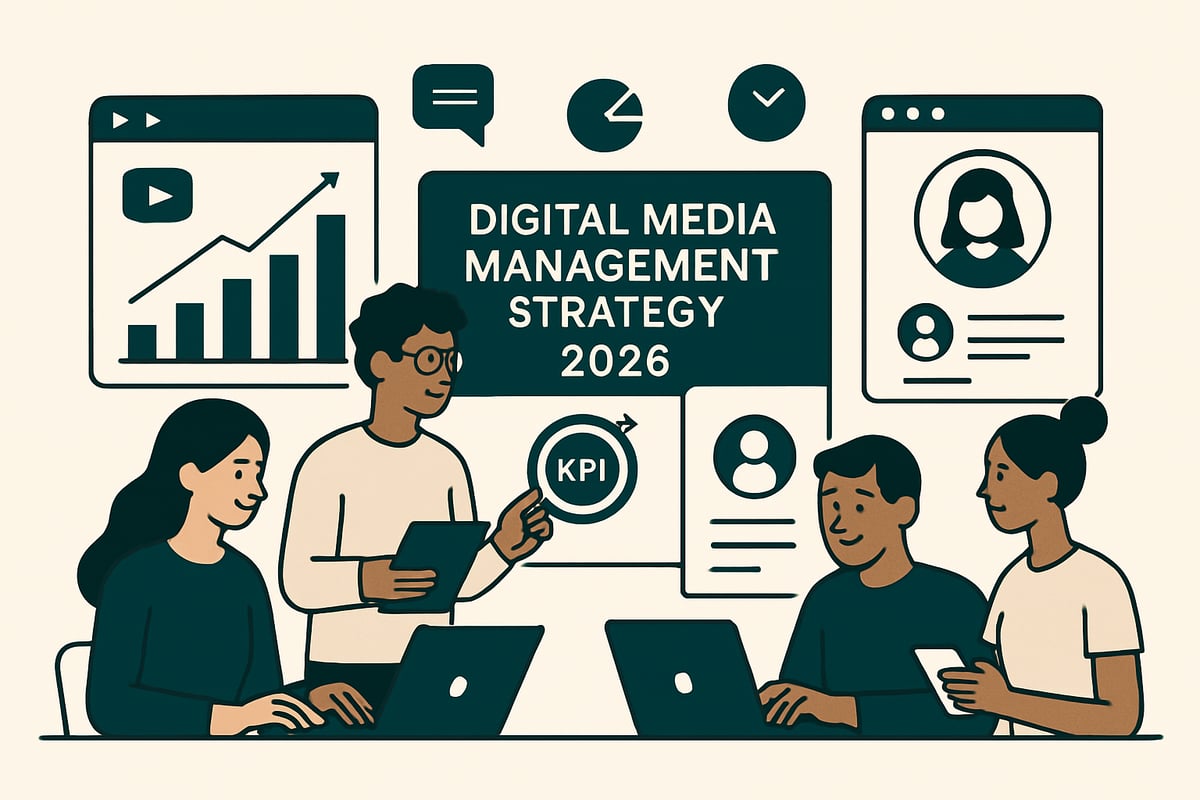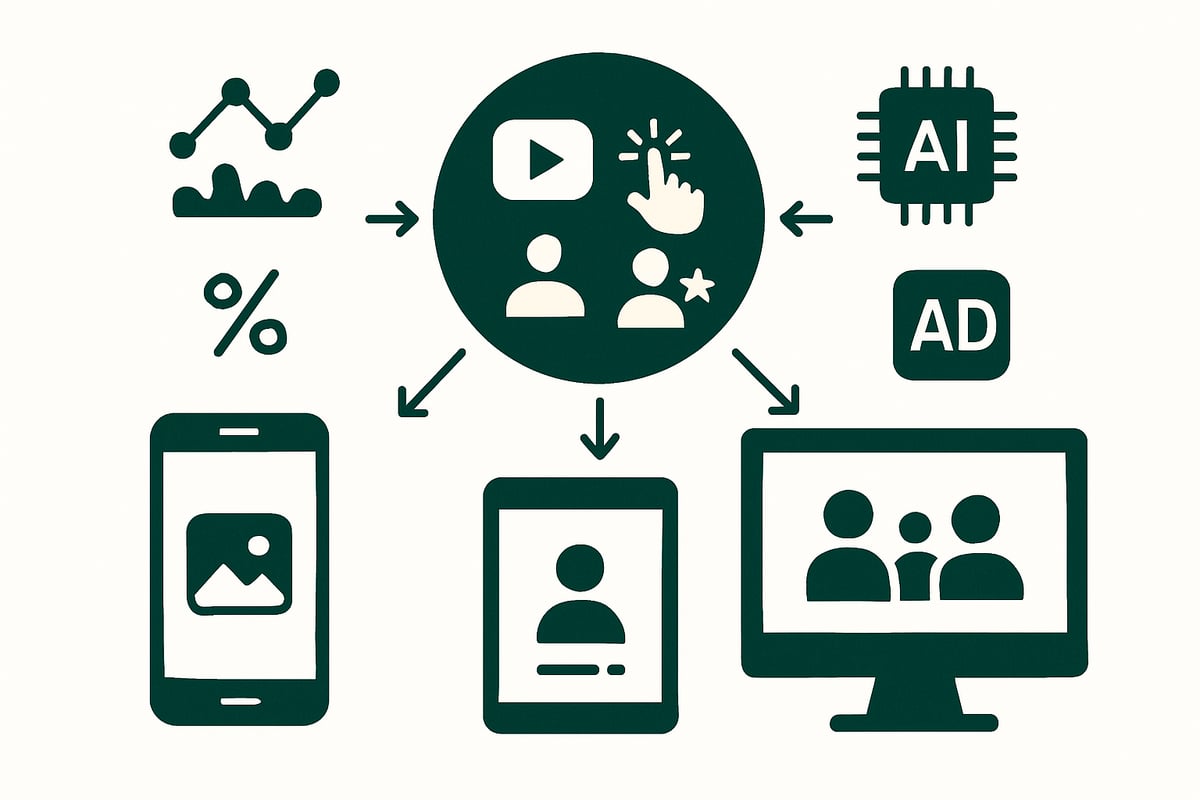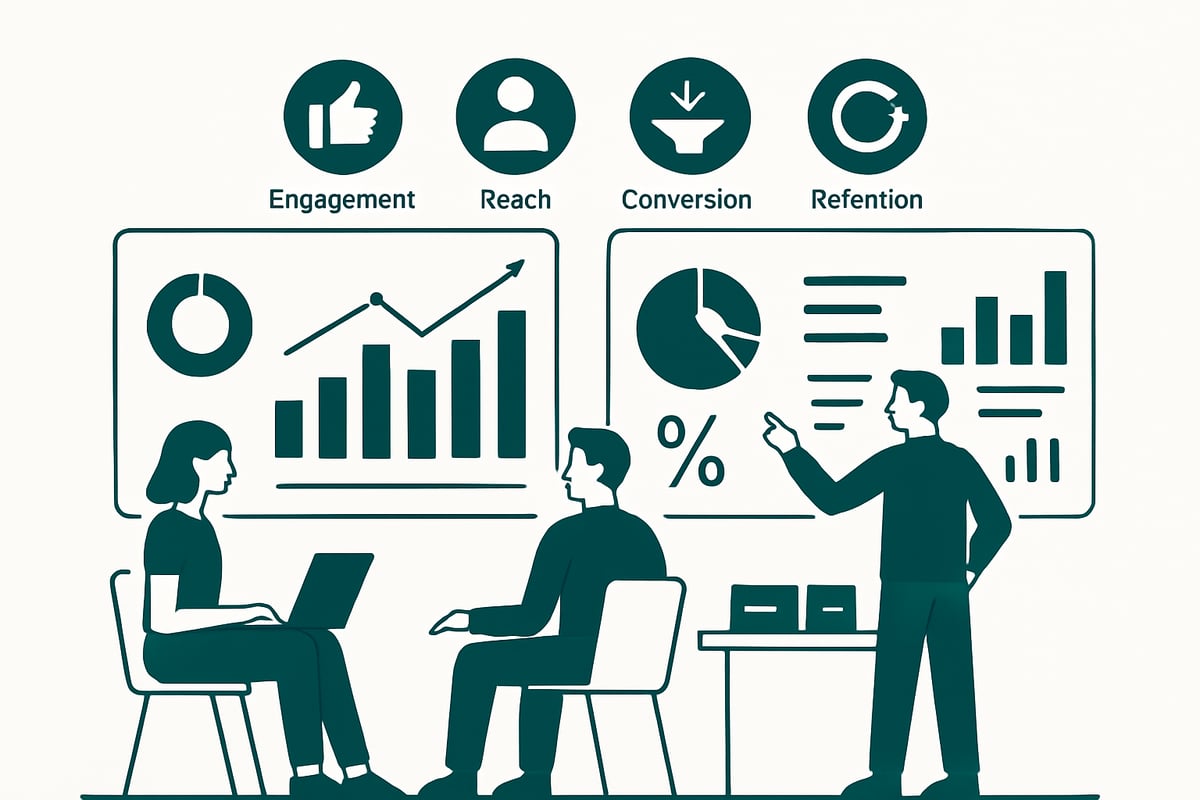Digital Media Management Guide: Strategies for Success

In 2026, digital media management stands at the heart of brand success, as technology evolves and consumer expectations shift almost overnight.
This comprehensive guide is designed to help organizations navigate the complexities ahead, providing actionable strategies and proven frameworks that drive results in digital media management for 2026 and beyond.
Inside, discover the latest trends, expert approaches to platform optimization, effective content planning, and the power of data-driven decisions. We will also share future-proofing techniques to keep your strategy agile and competitive.
Change in digital media is constant, but those who act decisively will lead. Ready to capture new opportunities, elevate your brand, and achieve measurable results? Let’s get started.
The Evolving Landscape of Digital Media Management
In 2026, digital media management is experiencing rapid transformation as social, mobile, content, and paid media blend into a single, dynamic ecosystem. Brands face an environment where channels overlap, audiences move seamlessly across devices, and expectations for personalized experiences are higher than ever.
Key Trends Shaping 2026
| Trend | Description |
|---|---|
| AI-Driven Personalization | Hyper-targeted content powered by advanced algorithms. |
| Short-Form Video | Quick, engaging videos dominate user feeds. |
| Interactive Media | Polls, quizzes, and AR filters boost engagement. |
| Omnichannel Integration | Unified messaging across all platforms. |
AI-driven personalization is now essential, with recent AI-driven personalization statistics 2025 showing significant increases in engagement and conversion rates. Short-form video continues to outperform static content, while interactive features invite deeper participation from audiences.
Algorithm changes and emerging platforms constantly shift the rules of content distribution. In response, 85% of brands are boosting their digital media budgets for 2026, aiming to stay ahead of competitors. Agility is critical, as strategies must adapt quickly to evolving consumer behaviors and platform updates.
Success in digital media management increasingly depends on cross-functional teams that unite marketing, IT, and design expertise. However, new challenges persist:
- Navigating stricter privacy regulations
- Standing out amid content saturation
- Managing fragmented platforms and diverse audiences
Brands that adapt, such as those leveraging TikTok and Instagram Reels, are seeing rapid audience growth and strong engagement. The landscape will continue to evolve, demanding that organizations remain flexible, data-driven, and ready to innovate.
Building a Future-Ready Digital Media Strategy
Creating a future-ready digital media management strategy in 2026 requires clear goals, a deep understanding of your audience, and precise channel selection. Each component works together to ensure your efforts drive measurable business impact. Explore how to set the foundation for success below.
Setting Clear Objectives and KPIs
Effective digital media management begins with defining specific, measurable objectives. Align your digital goals with your broader business strategy, such as increasing brand awareness, generating leads, or boosting sales. Select KPIs that reflect these aims, like engagement rates, reach, conversions, and ROI.
For example, use the SMART framework—Specific, Measurable, Achievable, Relevant, Time-bound—to plan campaigns and benchmark against industry standards.
Audience Analysis and Persona Development
Understanding your audience is central to digital media management success. Conduct research with analytics and social listening tools to gather insights. Develop detailed personas that guide your content and channel choices, ensuring each message resonates.
Segment your audience to deliver personalized experiences. According to industry data, 74 percent of marketers report higher ROI from segmented campaigns. Use persona-driven storytelling for relevance and engagement.
Channel and Platform Selection
Choosing the right channels is essential for maximizing impact. Evaluate each platform based on where your audience spends time and which content formats perform best. Prioritize investments using analytics and stay updated on trends.
B2B brands often focus efforts on LinkedIn, while B2C brands may prioritize Instagram and TikTok. Balance organic and paid media, and continually test and adapt as platforms shift.
Content Creation and Distribution Strategies for 2026
Creating standout content is vital for digital media management in 2026. Brands must engage audiences with diverse formats and deliver value across every touchpoint. Staying ahead requires blending creativity, strategy, and the latest tools for measurable impact.
Crafting Compelling, Multi-Format Content
Effective digital media management relies on producing content that resonates in multiple formats. In 2026, video, interactive stories, and immersive experiences capture the most attention. Brands benefit by collaborating with influencers and encouraging user-generated content.
Consistency in brand voice and visuals is essential. AI tools help streamline ideation and production, making it easier to maintain quality and frequency. For example, interactive Instagram Stories consistently drive engagement and foster community.
To dive deeper into high-impact content strategies, see our guide on Content Marketing Best Practices.
Optimizing Content for Each Platform
Tailoring content to each platform is a cornerstone of digital media management. Consider length, format, and tone to boost performance within platform algorithms. Short-form video outperforms static posts on TikTok and Reels, while LinkedIn favors thought leadership for B2B.
Scheduling and frequency matter. Analyze platform data to refine your approach and maximize reach. Repurposing content across channels saves resources and maintains a unified message.
Distribution and Amplification Tactics
Strategic distribution ensures content reaches the right audience. Paid promotion uses precise targeting, retargeting, and lookalike audiences for maximum impact. Organic tactics include community engagement, hashtag strategies, and partnerships.
Influencer and micro-influencer campaigns can amplify your message on emerging platforms. For example, brand collaborations often spark rapid growth and extend reach well beyond owned channels.
Data-Driven Decision Making and Performance Measurement
In 2026, data-driven decision making is the backbone of successful digital media management. Brands that harness analytics outperform competitors, making informed choices that drive measurable growth and efficiency.
To gain a clear view of performance, organizations should track essential metrics, including engagement, reach, conversion rates, retention, and customer lifetime value. These metrics, when integrated from sources like social platforms, web analytics, and CRM systems, provide a holistic perspective on the impact of digital media management.
| Metric | Purpose |
|---|---|
| Engagement | Measures audience interaction |
| Reach | Assesses audience size |
| Conversion Rate | Tracks goal completion |
| Retention | Monitors ongoing loyalty |
| Customer Lifetime Value | Evaluates long-term impact |
Real-time monitoring is critical for agile optimization. Tools like Google Analytics and native platform dashboards enable teams to quickly identify trends, optimize campaigns, and maximize ROI. Brands leveraging advanced analytics see growth up to 30% faster than industry peers. For practical strategies on optimizing returns, see our insights on Maximizing ROI with Online Advertising.
Continuous improvement relies on A/B testing and experimentation frameworks. By testing creative variations and audience segments, brands refine digital media management strategies for better outcomes. Equally important is upholding privacy standards, ensuring data use aligns with current regulations and ethical guidelines.
Data-driven approaches empower teams to adapt, innovate, and lead in a rapidly changing digital landscape.
The Role of Agencies in Digital Media Management
For brands aiming to excel in digital media management in 2026, collaborating with experienced partners is essential. At Brief Creatives, we bring deep expertise across online advertising, social media management, usability, design, websites, and mobile apps.
As a Google Partner and one of Portugal’s top SMEs, we have completed over 400 projects for more than 70 clients worldwide. Our measurable, client-centric strategies focus on real results and agile adaptation in a fast-changing landscape.
We build lasting relationships by prioritizing human-centered solutions. Explore our Social Media Management Services to see how we help brands grow and thrive.
Future-Proofing Your Digital Media Management Strategy
Staying ahead in digital media management means embracing innovation and adapting with agility. As the landscape continually evolves, organizations must future-proof their strategies to remain competitive and resilient.
Embracing Innovation and Continuous Learning
Innovation is the heartbeat of digital media management in 2026. Brands must experiment with emerging technologies, such as AI, AR/VR, voice search, and IoT, to unlock new growth opportunities.
Building a culture that encourages learning and upskilling is essential. Teams benefit from ongoing training and regular exposure to industry advancements. For example, piloting AI-powered chatbots can elevate customer engagement while keeping your brand at the forefront.
For deeper insights on how AI is transforming marketing and customer interaction, explore AI’s role in marketing by 2026.
Adapting to Regulatory and Market Changes
As privacy regulations and platform policies rapidly shift, digital media management strategies must remain nimble. Monitoring updates to GDPR, CCPA, and new attribution models is crucial for compliance and performance measurement.
Scenario planning helps teams prepare for market disruptions and technology shifts. Agile processes allow us to pivot quickly, minimizing risk and seizing new opportunities. By staying informed and responsive, we ensure our strategies are robust, ethical, and ready for whatever comes next.
As you look to elevate your digital media strategy for 2026, it’s clear that staying agile and data-driven is key to achieving measurable growth. We’ve seen how emerging platforms, advanced analytics, and a human-centered approach can make all the difference for brands navigating today’s complex digital landscape. If you’re ready to transform your digital presence and want a partner who combines technical expertise with a client-focused mindset, let’s connect. You deserve a tailored strategy that delivers real results—so why not take the next step? Get Proposal





